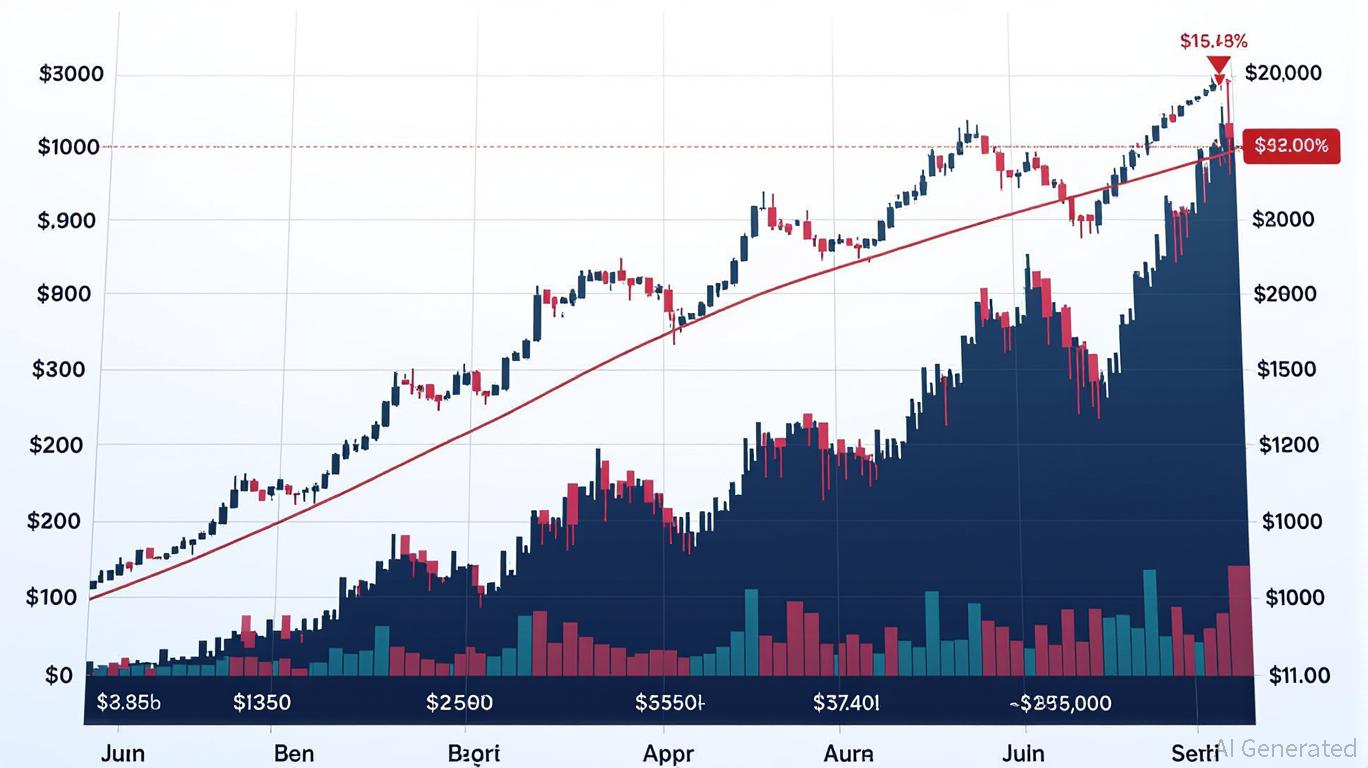Ethereum Gas Limit Jumps 33 Percent as Developers Push L1 Scaling
Quick Take Summary is AI generated, newsroom reviewed. Ethereum validators approved a 33% increase in the gas limit, raising it from $45 million to $60 million per block. The upgrade activated automatically after crossing the 50% validator approval threshold. This scaling shift was enabled by EIP-7623, which limits worst-case block sizes by raising calldata gas costs. The higher gas limit allows for more transactions per block, reducing congestion and improving reliability for dApps.References Data from ht
Ethereum has taken a bold step toward Layer-1 scaling. On November 25, the network increased its gas limit from 45 million to 60 million. That marks a 33% jump in block capacity within a single upgrade cycle. More than half of Ethereum validators approved the change. Because the support crossed the 50% threshold, the upgrade activated automatically. No hard fork was required.
This quiet but powerful shift signals a major change in how Ethereum now approaches scalability. For nearly four years, the gas limit stayed close to 30M. Developers kept it low to protect the network from performance risks. Now, that cautious era appears to be fading.
Why Developers Finally Pushed the Limits
So why did Ethereum developers suddenly move faster this year? The answer lies in three key technical breakthroughs that changed the risk profile. First, EIP-7623 added protection at the protocol level. It raised the gas cost of calldata. This limits worst-case block sizes and adds a built-in safety buffer. As a result, developers gained more confidence to raise the gas ceiling. Second, major Ethereum clients received deep performance upgrades.
Teams optimized software like Nethermind, Erigon and Reth. They improved cryptographic operations and adjusted gas pricing for heavy computations. These updates now allow nodes to handle 60M gas blocks without stress. Third, developers ran intense stress tests on testnets such as Sepolia and Hoodi. The results stayed stable even at higher loads. Block propagation is still completed within Ethereum’s tight four-second consensus window. That removed one of the biggest scaling fears. Together, these upgrades shifted Ethereum from cautious theory to evidence-based scaling.
What This Means for Users and Developers
Higher gas limits mean more transactions per block. That helps reduce congestion during peak demand. It also improves reliability for apps that rely on steady block space. For developers, the change improves workflow. They no longer need to over-compress smart contracts just to save gas. This unlocks cleaner designs and faster development cycles.
Users may also feel the impact. When demand spikes, networks usually slow down. With more room per block, Ethereum can now absorb heavier traffic with less pressure. Still, some questions remain. Larger blocks require stronger hardware. That creates long-term debates about decentralization. Developers say current data shows the network remains stable.
The Road to 100M and the Future of L2s
Looking ahead, some developers now discuss pushing the gas limit toward 100M. That would mark a massive leap for Ethereum’s base layer. However, challenges remain. Teams still need to manage state growth, heavy cryptographic load and network data flow. There is also a growing debate about what this means for Layer-2 networks.
Some analysts believe faster Layer-1 could reduce pressure on rollups. Others argue it simply strengthens the entire ecosystem. Currently, one thing is clear. Ethereum is no longer standing still on scaling. The 60M gas limit marks a turning point. Developers now scale with real data, not just caution. The Layer-1 race just entered a new phase.
Disclaimer: The content of this article solely reflects the author's opinion and does not represent the platform in any capacity. This article is not intended to serve as a reference for making investment decisions.
You may also like
Bitcoin Leverage Liquidation Patterns: Managing Risk Amidst Crypto Market Volatility
- 2025 crypto liquidation events exposed leverage risks, with $2B+ daily losses from Bitcoin’s volatility and thin liquidity. - Structural flaws like over-leveraged positions and inadequate buffers worsen cascading price declines during crashes. - Panic selling and herd behavior amplified losses, as seen in Ethereum and Solana’s $239M combined liquidations. - Experts urge diversified portfolios, automated tools, and liquidity-aware strategies to mitigate leverage-driven risks.

Balancer’s $8 Million Recovery Strategy Splits DeFi: Accuracy or Backing the Community
- Balancer DAO proposes $8M recovery plan to reimburse victims of a $116M exploit via proportional BPT-based returns to affected liquidity pools. - Attack exploited a rounding function vulnerability in Stable Pools, bypassing 11 smart contract audits and draining funds through manipulated swaps. - Non-socialized distribution prioritizes precision over community-wide sharing, sparking debates about fairness and governance in DeFi recovery. - Industry experts highlight the incident as a "wake-up call," urgin
Ethereum Updates Today: Bhutan's Strategic Adoption of Ethereum: Leveraging Blockchain for National Digital Identity
- Bhutan stakes 320 ETH ($970,820) via Figment.io, adding 10 Ethereum validators to boost blockchain participation and economic resilience. - The government migrates its National Digital Identity system to Ethereum by 2026, leveraging its security for 800,000 citizens' self-sovereign identity. - Crypto reserves (6,154 BTC, 336 ETH) support the Gelephu Mindfulness City project, aiming to integrate blockchain with sustainable urban development. - Challenges include digital asset volatility and regulatory gap

The Strategic Value of Industrial Properties Amid Upstate New York’s Changing Economic Environment
- New York State's FAST NY and POWER UP programs are driving industrial real estate growth in Upstate through infrastructure grants and power-ready site upgrades. - $283M+ in grants since 2022 has transformed underutilized sites into competitive assets for semiconductors and clean-tech industries. - Corporate campus redevelopments like STAMP Park demonstrate 10%+ property value increases through public-private infrastructure partnerships. - Strategic investments align with semiconductor "superhighway" goal

